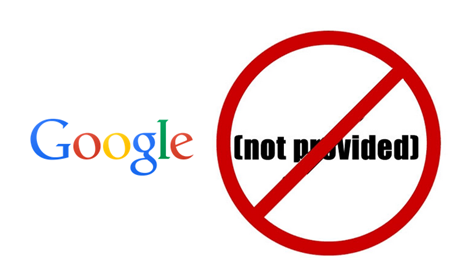Back in October of 2011, Google began to hide the keywords from visibility to site owners for any visits to sites by users logged into their Google accounts. More recently, on September 23rd 2013, Google turned OFF the switch entirely for ALL organic keyword results in Google Analytics (regardless whether searchers were logged into their Google accounts when conducting their searches). Visits to a site will now show “not provided” results in GA (being encrypted “secure searches”) creating headaches for site owners and their search engine optimization consultants.
Why did Google decide to do this?
There has been endless speculation as to why Google decided to make such an extreme change:
- Privacy concerns (NSA spying, the rise of “big data”)
- Advertising network competitors (which compete with Google Adwords) being able to use this (free) keyword data from publishers’ sites to target and retarget ads on those sites based on visitor interests
- Potential future monetization of the Google Analytics tool to create a premium paid version which would include this information
What should you do now?
There are still a few remaining ways to access your organic keyword search information. Here are my recommendations:
- Sign up for Webmaster Tools if you haven’t already. If you have an Adwords account, link it to Webmaster Tools. Use the “Dimensions” feature in Adwords and select under “View”, “Paid and Organic” to begin logging your keywords history.
- If you don’t have an Adwords account, use Webmaster Tools to view your search queries (which include both not-provided and unmasked or provided organic keywords). This report will not show you exact numbers of searches by keyword but it will give you relative ranking of major organic keywords. In addition, it shows impressions and average page position which both can be useful for targeting high impression keywords with content creation around these and showing you where you have stronger competition by keyword in organic search (relative position). Finally, it gives you click through rate by keyword which you can use to improve your title and description tags.
- Analyze the profile of your “not provided” visitor base by either creating a filter or an advanced segment around “not provided” visits to determine how they compare to branded vs generic keyword audiences. Mirror your marketing strategies around what you find in terms of entrance pages, page depth of visitation, bounce rates etc. See Avinash Kaushik’s blog post here. For example, if you discover pages where “not provided” are entering at a higher rate vs your overall traffic of “provided” visitors, go back in time an look at the old top referring keywords to those pages, giving you some clues as to what the “not provided” keywords might be.
- In addition to these options, check here for some additional posts about how to manage around “not provided” issues.
Finally, readjust your sights. SEO is only one driver of traffic. Pay attention to your referring sites and inbound links strategy. Develop a content strategy. Work on social media referrals. Consider paid search to drive up visitation to specific pages where you can’t rank well for organic search. Build your brand offline (PR, partner tie-ins, coupons, events etc.). Create a promotional strategy and promote your promotions. Go for it!

